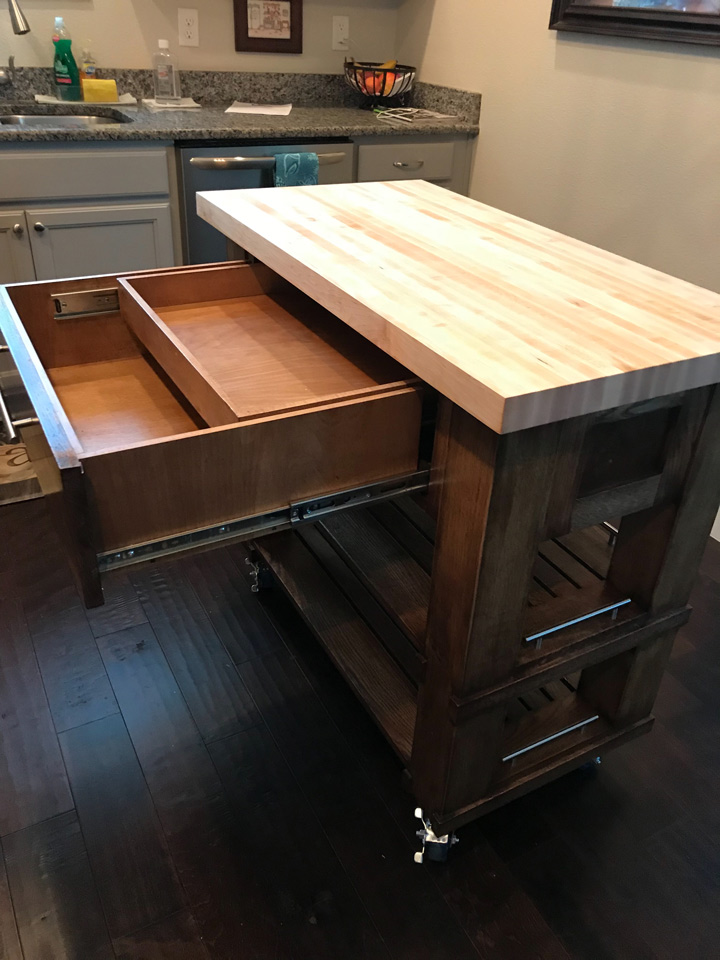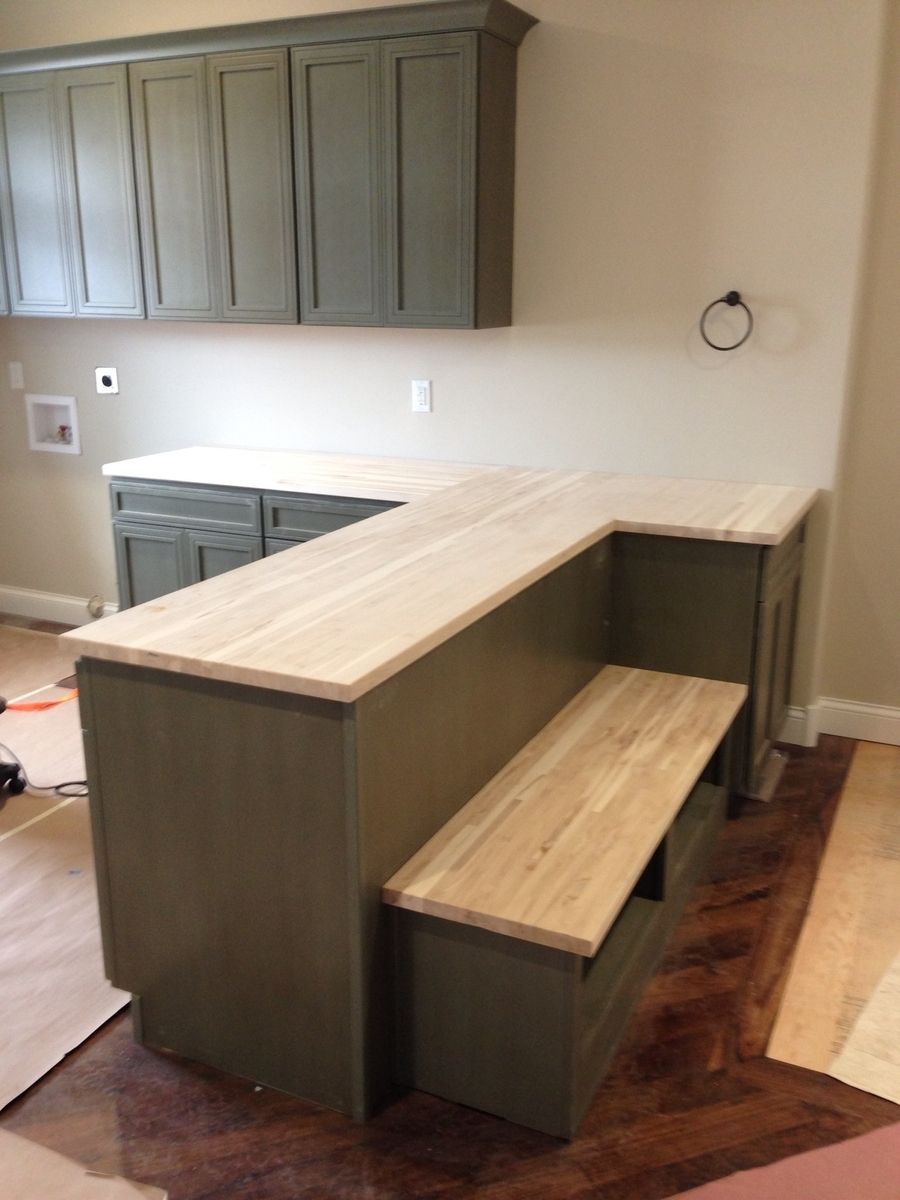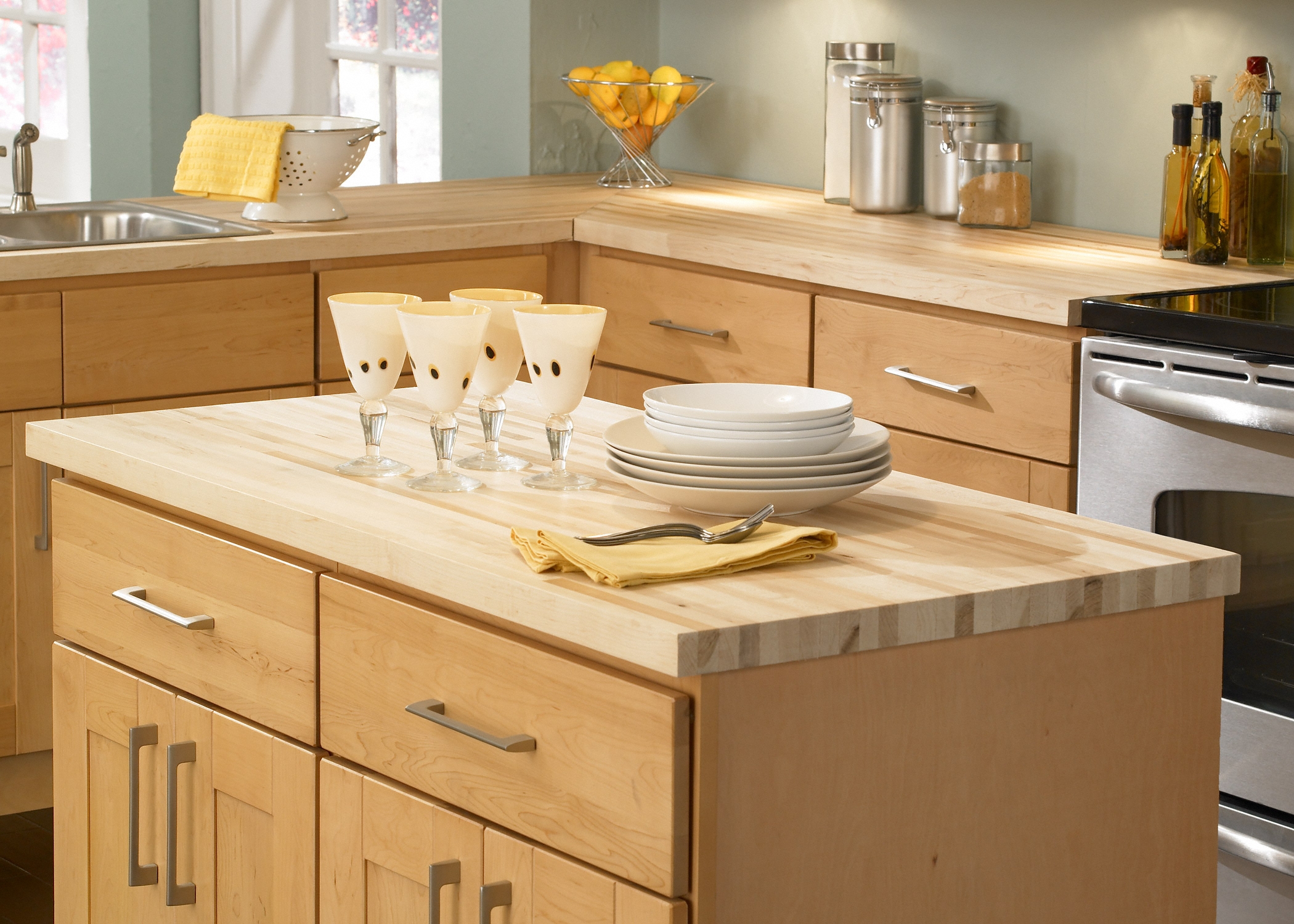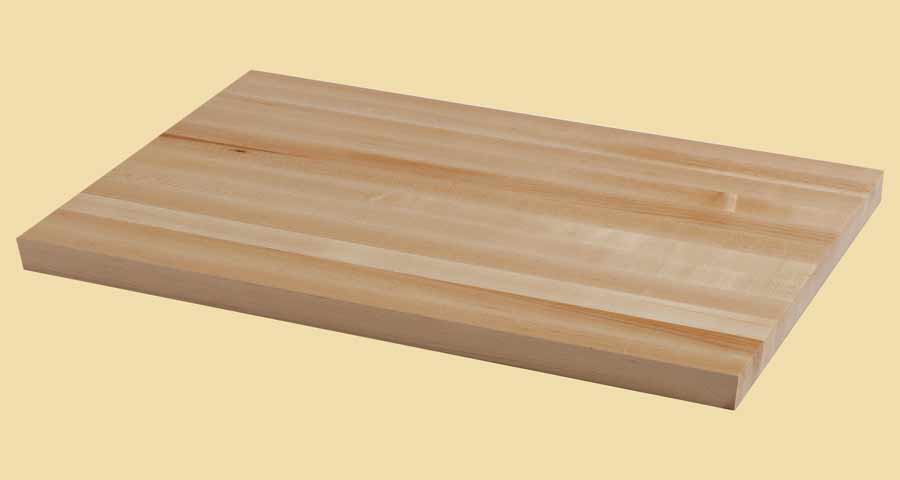Solid maple butcher block countertops are a timeless and functional addition to any kitchen, offering both beauty and practicality. Renowned for their durability and warmth, these countertops can serve as both a work surface and a focal point in your kitchen. Understanding how to properly care for and maintain butcher block countertops will ensure they remain a centerpiece in your home for years to come.
Maple is a preferred wood for butcher block countertops due to its hardness and fine grain, which makes it resistant to scratches and gouges. Its light color and uniform texture also add a touch of elegance to any kitchen decor. However, like all wood surfaces, maple butcher block requires regular maintenance to keep it looking its best. This includes regular cleaning, oiling, and sanding to address any wear and tear.
One of the primary benefits of butcher block countertops is their versatility. They can be used for food preparation, as a cutting surface, or even as a dining area. This versatility, however, means that the countertops are exposed to a variety of potential stains and damage. To prevent this, it’s essential to establish a regular cleaning routine. Daily cleaning with a mild dish soap and warm water will remove most spills and residues. Avoid using harsh chemicals or abrasive cleaners that can damage the wood.
To keep the wood hydrated and to protect it from moisture, regular oiling is crucial. Food-grade mineral oil is the most recommended treatment for butcher block countertops. Apply a generous amount of oil to the surface and allow it to soak in overnight. Wipe away any excess oil the next morning with a clean cloth. This process should be repeated every few weeks or whenever the wood appears dry. Oiling not only nourishes the wood but also helps to create a barrier against water and food stains.

In addition to mineral oil, you can also use beeswax or a mixture of beeswax and mineral oil for an added layer of protection. Beeswax provides a slightly more robust finish and adds a subtle sheen to the wood. Apply the beeswax in a similar manner to the mineral oil, allowing it to penetrate the wood before buffing off the excess. This can be particularly useful in areas that experience heavy use.
Despite regular maintenance, scratches and cuts are inevitable on a butcher block countertop, especially if it is used as a cutting surface. Fortunately, maple’s durability makes it easy to repair. For minor scratches, a light sanding with fine-grit sandpaper can smooth out the surface. Always sand in the direction of the grain to avoid creating new scratches. After sanding, reapply mineral oil to restore the wood’s protective layer.
For deeper gouges or stains, a more intensive sanding may be required. Use a coarse-grit sandpaper to remove the damage, followed by a finer grit to smooth the surface. Again, finish with a thorough application of mineral oil. In some cases, it may be beneficial to sand the entire countertop to ensure an even appearance.

Butcher block countertops are prone to water damage if not properly maintained. Water can seep into the wood, causing it to swell, crack, or warp. To prevent this, always wipe up spills immediately and never leave standing water on the surface. Additionally, placing trivets or hot pads under pots and pans can protect the wood from heat damage, which can also cause warping or discoloration.
One of the unique advantages of butcher block countertops is their ability to be refinished. Unlike other countertop materials, which may need to be replaced when damaged, butcher blocks can be sanded down and re-oiled to restore their original beauty. This makes it a long-lasting and sustainable choice for any kitchen.
In terms of aesthetic appeal, solid maple butcher block countertops can complement both modern and traditional kitchen designs. Their natural warmth and texture provide a striking contrast to sleek appliances and minimalist decor. They can also be customized with various edge profiles and finishes to suit individual tastes.
Maintaining a butcher block countertop requires a commitment to regular care, but the effort is well worth it. The natural beauty of wood adds a welcoming touch to any kitchen, and the durability of maple ensures that your countertop can withstand the rigors of daily use. With proper care, a butcher block countertop can last for decades, becoming a cherished feature of your home.

In addition to regular cleaning and oiling, it’s important to take preventative measures to protect your countertop. Using cutting boards for food preparation can prevent deep cuts and scratches, while trivets and hot pads can protect against heat damage. These small steps can significantly extend the life of your countertop.
When choosing a butcher block countertop, consider the installation process. While some homeowners may opt for a DIY installation, hiring a professional can ensure a seamless fit and finish. Proper installation is crucial for preventing gaps and ensuring the countertop is securely anchored.
Finally, solid maple butcher block countertops are an environmentally friendly choice. Maple is a renewable resource, and many manufacturers offer sustainably sourced wood options. Additionally, the longevity of butcher block countertops reduces the need for frequent replacements, further minimizing environmental impact.

Common Mistakes to Avoid:
Neglecting Regular Maintenance: Skipping regular cleaning and oiling can lead to a dry, cracked surface that is more susceptible to stains and damage.
Using Harsh Chemicals: Cleaning with bleach, ammonia, or other harsh chemicals can damage the wood and strip away its natural oils.
Ignoring Spills: Allowing spills to sit can cause stains and water damage. Wipe up spills immediately to protect the wood.
Cutting Directly on the Surface: Using the countertop as a cutting board can lead to deep cuts and scratches. Always use a separate cutting board.
Not Using Trivets or Hot Pads: Placing hot pots and pans directly on the wood can cause burns and warping. Use trivets and hot pads to protect the surface.

How often should I oil my butcher block countertop?
You should oil your butcher block countertop every few weeks or whenever it appears dry. Applying food-grade mineral oil regularly helps to maintain the wood’s hydration, preventing it from cracking and providing a protective barrier against moisture and stains. For areas with heavy use, you might need to oil more frequently. Applying a mixture of mineral oil and beeswax can also offer additional protection and a subtle sheen.
Can I cut directly on my butcher block countertop?
While you can cut directly on a butcher block countertop, it is not recommended as it can lead to deep cuts and scratches over time. These cuts can become a breeding ground for bacteria and require frequent sanding and re-oiling. Using a cutting board protects the countertop from damage and maintains its appearance. If you do cut directly on the surface, be prepared for more intensive maintenance.
How do I remove stains from my butcher block countertop?
To remove stains from a butcher block countertop, start by lightly sanding the stained area with fine-grit sandpaper, always following the grain of the wood. For deeper stains, use a coarser grit first, then finish with a fine grit. After sanding, wipe the surface clean and reapply food-grade mineral oil to restore the protective barrier. For stubborn stains, a mixture of baking soda and water can be applied as a paste, left to sit for a few minutes, and then wiped away before sanding.
Can I use any type of oil on my butcher block countertop?
No, you should only use food-grade mineral oil or a mixture of mineral oil and beeswax for butcher block countertops. Other oils, such as vegetable oil or olive oil, can go rancid over time and create an unpleasant smell. Food-grade mineral oil is safe for food preparation surfaces and provides the necessary hydration and protection for the wood.
How do I prevent my butcher block countertop from warping?
Preventing warping involves proper maintenance and care. Avoid exposing the countertop to excessive moisture and heat. Always wipe up spills immediately and use trivets or hot pads under hot pots and pans. Regularly oiling the countertop helps to maintain its moisture balance, reducing the risk of cracking or warping. Ensuring proper installation and securing the countertop can also help prevent warping. If the countertop does start to warp, sanding and re-oiling can often correct minor warping.
Hard Maple Butcher Block Countertops – J. Aaron

HARDWOOD REFLECTIONS Unfinished Maple 6 ft. L x 39 in. D x 1.5 in

Wormy Maple (Ambrosia) Edge Grain Butcher Block Countertop

Forever Joint 1.5″ x 26″ x 38″ Hard Maple Coffee Table Top

1 1/2 in. x25 in. x 8 lft Maple Butcher Block Countertop

Maple Butcher Block Countertops – Country Mouldings

American Maple Butcher Block Countertop 8ft.
Related articles:
- Care Of Butcher Block Countertop
- Butcher Block Countertops Maintenance
- Antique Butcher Block Countertops
- Butcher Block Countertop Sealing
- Wood Butcher Block Countertop
- Thick Butcher Block Countertop
- How To Finish A Butcher Block Countertop
- Butcher Block Countertops Sealing
- Butcher Block Countertops Redo
- Dark Stained Butcher Block Countertops